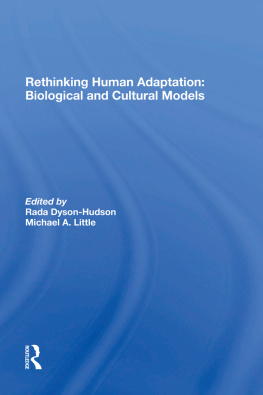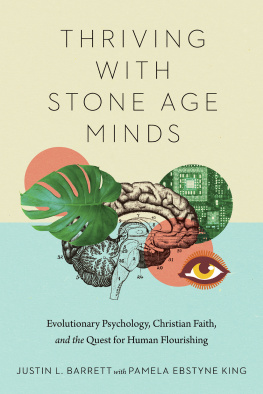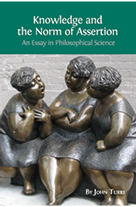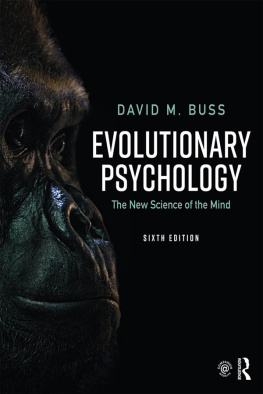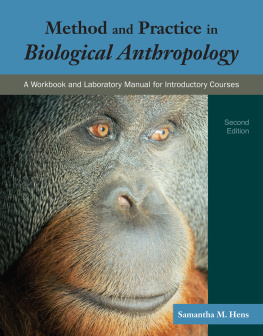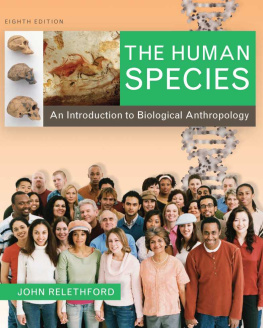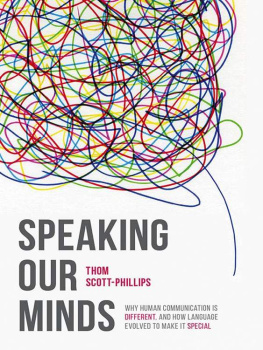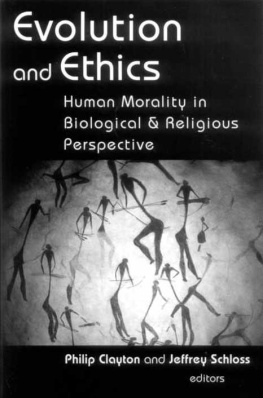i EXPLAINING HUMAN DIVERSITY
Why are humans so different from each other and what makes the human species so different from all other living organisms? This introductory book provides a concise and accessible account of human diversity, of its causes and the ways in which anthropologists go about trying to make sense of it. Carles Salazar offers students a thoroughly integrated view by bringing together biological and sociocultural anthropology and including perspectives from evolutionary biology and psychology.
Carles Salazar is Professor of Social Anthropology at the University of Lleida, Spain. He has a PhD in Social Anthropology from the University of Cambridge, UK. ii
iii EXPLAINING HUMAN DIVERSITY
Cultures, Minds, Evolution
Carles Salazar
iv First published 2019
by Routledge
2 Park Square, Milton Park, Abingdon, Oxon OX14 4RN
and by Routledge
711 Third Avenue, New York, NY 10017
Routledge is an imprint of the Taylor & Francis Group, an informa business
2019 Carles Salazar
The right of Carles Salazar to be identified as author of this work has been asserted by him in accordance with sections 77 and 78 of the Copyright, Designs and Patents Act 1988.
All rights reserved. No part of this book may be reprinted or reproduced or utilised in any form or by any electronic, mechanical, or other means, now known or hereafter invented, including photocopying and recording, or in any information storage or retrieval system, without permission in writing from the publishers.
Trademark notice: Product or corporate names may be trademarks or registered trademarks, and are used only for identification and explanation without intent to infringe.
British Library Cataloguing-in-Publication Data
A catalogue record for this book is available from the British Library
Library of Congress Cataloging-in-Publication Data
A catalog record has been requested for this book
ISBN: 978-0-8153-5652-3 (hbk)
ISBN: 978-0-8153-5654-7 (pbk)
ISBN: 978-1-351-12798-1 (ebk)
Typeset in Bembo Std
by Sunrise Setting Ltd, Brixham, UK
vii
viii
This work was partially supported by the Ministry of Economy and Competitiveness of Spain (grant: HAR2013-48901-C6-2-R). Susan Frekko, Max Holland, Ann MacLarnon and three anonymous reviewers read and commented on earlier versions of the manuscript. I greatly appreciate their manifold witty suggestions and intelligent criticisms. I also owe a big debt to the psychology students of the University of Lleida, for whom this book was originally intended, and to the thousands of questions that they have asked me over the years that made me thoroughly rethink my job as an anthropologist and as an educator. Lastly, my warmest thanks of all go to my wife Nria and my daughter Ceclia, without whom nothing of what follows could have ever been written.
In the last few decades, human diversity has become a burning issue in the majority of Western societies. Very different peoples, physically, linguistically and culturally different, have become acquainted with each other for the first time in their history due to massive immigration into Western societies from all over the world. This is a highly remarkable phenomenon that is characteristic of the globalised world in which we live. However, human diversity is nothing new, what is new is the incessant interaction of so many different peoples on a massive scale. In fact, humans have been different from each other practically since the very beginning of human evolution. Anthropology is the social science that studies human diversity. The aim of anthropology is to understand the most distinctive characteristic of the human species: the fact that we humans are very different from each other and, by being so different from each other, that we are also very different from all other species of living organisms.
This book originated in an introductory course to sociocultural anthropology that I taught to psychology students at the University of Lleida between 2010 and 2016. It is an invitation to anthropology rather than an introduction because my purpose in those lectures was not to introduce anthropology to students who might end up studying for a degree in that discipline, but to persuade non-anthropologists of the virtues of the discipline of anthropology. In other words, to invite them to know something about the subject that might prove very useful to psychology undergraduates in particular or to anyone interested in understanding human behaviour. And this is also the purpose of this book: to persuade the reader that human diversity matters and that the social science that deals with this subject is therefore an interesting science.
This accounts for the style in which the book has been written. This is a text for students of the sciences of human behaviour. But it may also be of interest to the general reader who wants to know why humans are so different from each other and what makes the human species so different from all other living organisms. I have tried to develop the main ideas of the book in the simplest and clearest way I could think of, even though the argument will gradually increase in complexity as the book proceeds. There are neither footnotes nor bibliographical references in the main text. There is only a bibliographical note at the end of each chapter. This note is not meant to be comprehensive in any way but is merely a brief reference to some works that I consider useful, interesting or illustrative of what has been dealt with in that chapter.
But this is not perhaps the most innovative aspect of this work. There are lots of other books with a similar purpose in many other disciplines: to invite the reader to see how useful, interesting and amusing that particular discipline is, even or especially, for those who have never thought of taking up a degree in it or studying it in a systematic way. What I take to be its most daring innovation comes with the specific approach I shall try to develop in this book: a biocultural approach. What does that mean?
Human diversity can be accounted for in many different ways. Humans are different from each other, first of all as individuals. These individual differences can in turn be biological: with the exception of identical twins, we are all genetically unique. But most of them are what we might call existential differences. Our life histories are all different, and the experiences and memories we accumulate as a result are also different. Perhaps we do not need any particular science to account for diversity among individuals since most of the time it does not cause any problem. And when it does, that is, when individual differences become pathological in any way, several scientific and humanistic disciplines can deal with them, be they biomedical disciplines when it is a biological pathology or, more generally, psychological or psychotherapeutic disciplines when the individual dysfunction has its origins in an existential problem. In fact it could be argued that all the human sciences and the humanities, philosophy included, are there in one way or another to help us address these existential problems.
But far more problematical and upsetting than individual differences are collective differences, namely, those that make whole groups of individuals different from other groups. This has been the traditional object of the analysis of anthropology. Admittedly, the difference between individual and collective differences may not be as clear-cut. But there is always the sense that collective or generalised phenomena are less likely to be the product of contingent events than individual particularisms. And the same applies to the distinction between individual and collective differences. Thus, insofar as those collective differences can in turn originate in two relatively independent sets of causes, biological or cultural, two separate sub-disciplines within anthropology take those two discrete sets of collective differences as their object of study. Biological or physical anthropology deals with biological collective differences within the human species, and social, cultural or sociocultural anthropology (they are all different names for the same discipline) studies the causes of human diversity when they have, or are thought to have, a cultural origin. As we will see in what follows, intraspecific biological differences (i.e. biological differences between the members of the same species) are not particularly distinctive of the human species. In general terms, we humans are not biologically more different from other humans than the member of any other species of living organisms is from any other member of the same species. In fact, the very opposite seems to be the case: humans are more genetically homogeneous than other primate species. Biological anthropology deals with humans as a single species, and in studying what might be intraspecific differences, biologists are seeking unifying underlying principles, relying on comparative analyses with other primate, mammalian and vertebrate species. Relative intraspecific genetic (and biological by implication) homogeneity in humans could be the reason why most biological anthropologists study human differences across time rather than across space. For it is when we go back in the history of the human species that human biological diversity starts to become interesting. Because, as is the case for any other species of living organism, it is from those ancestral differences that the current biological characteristics of human beings can be accounted for.




